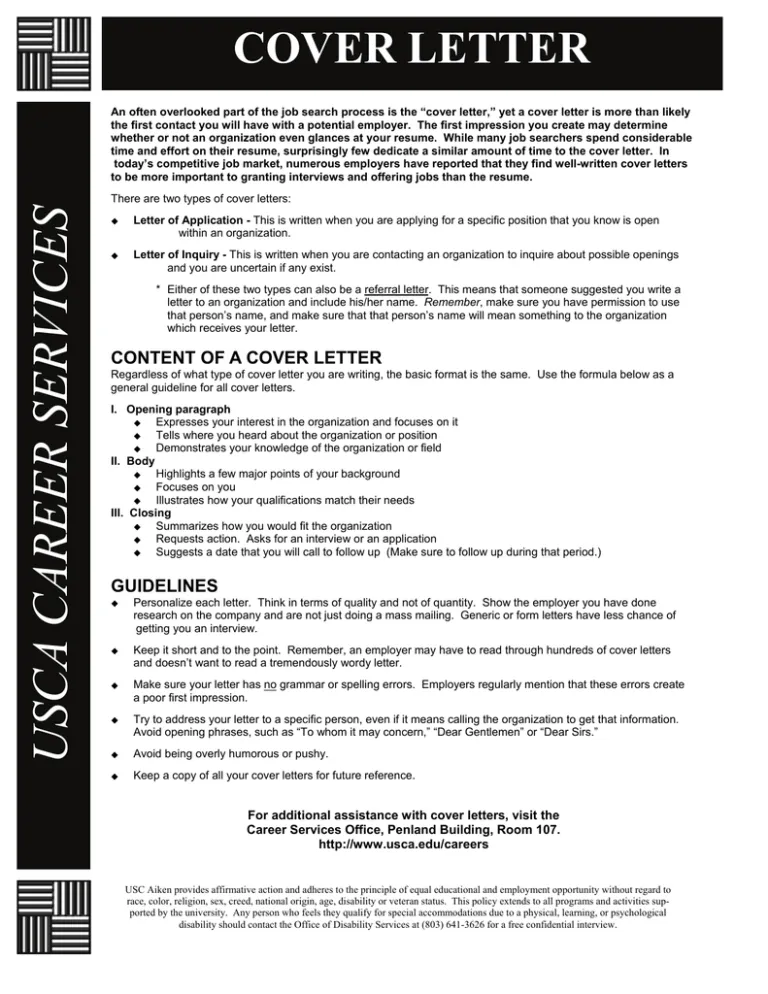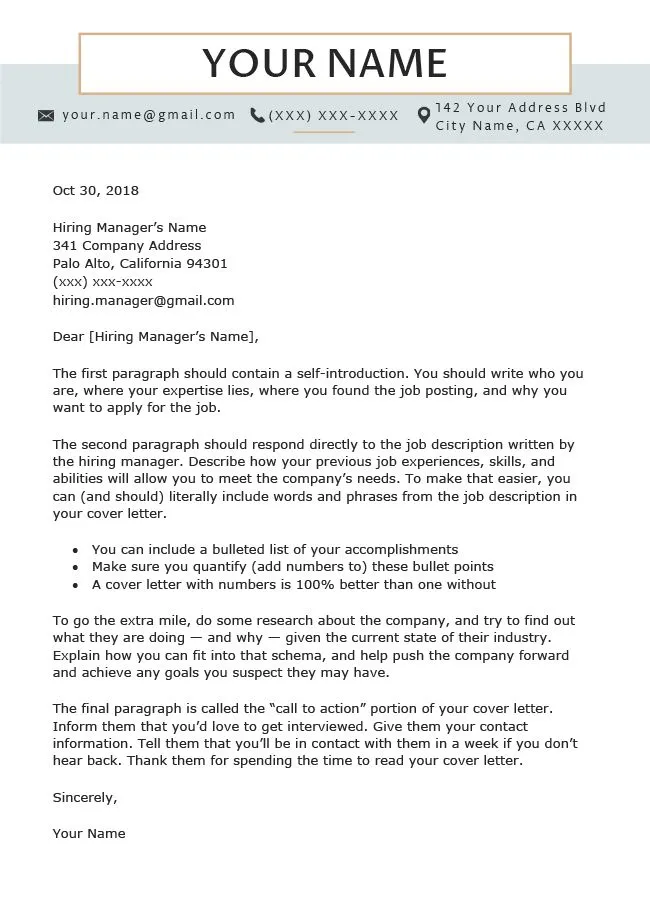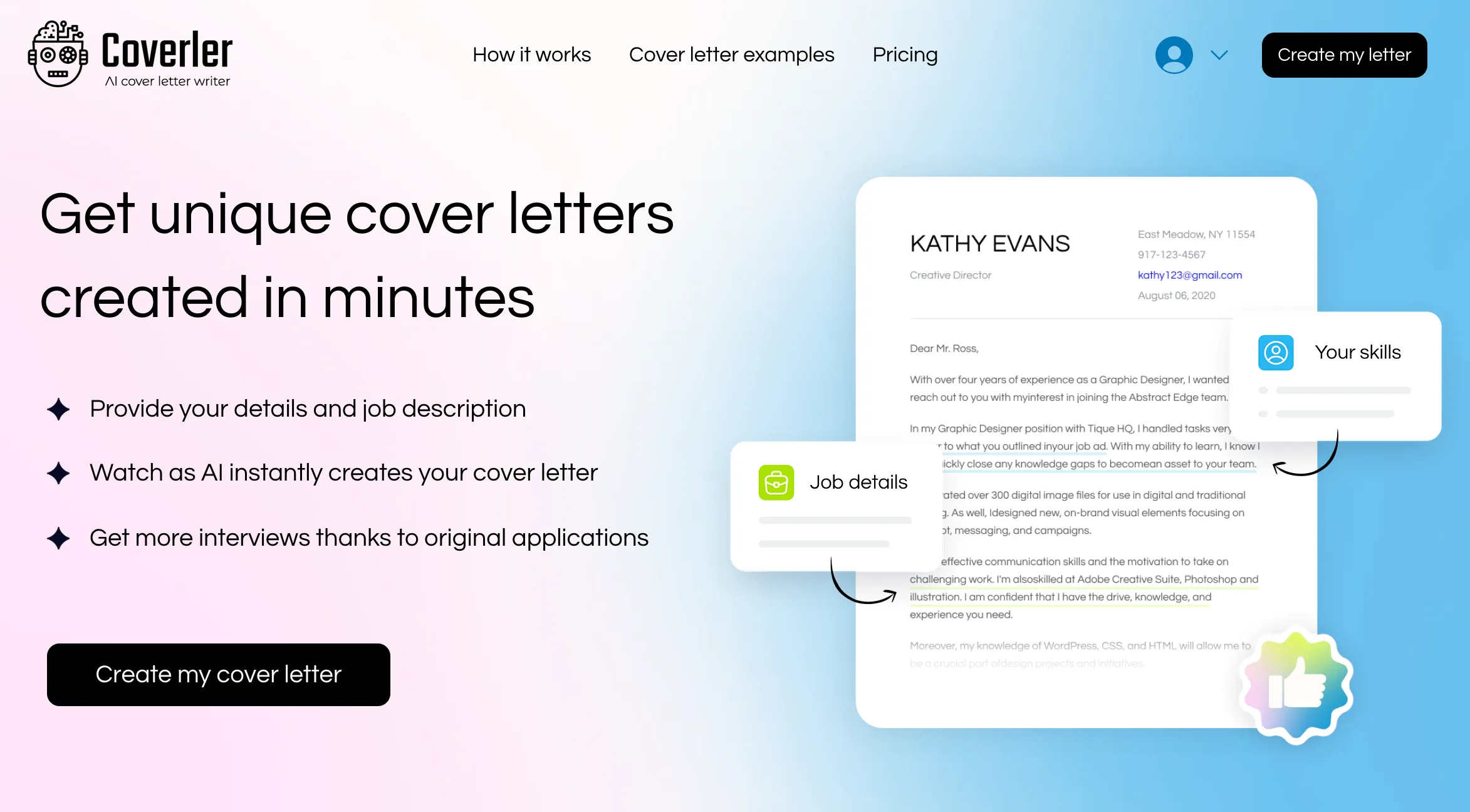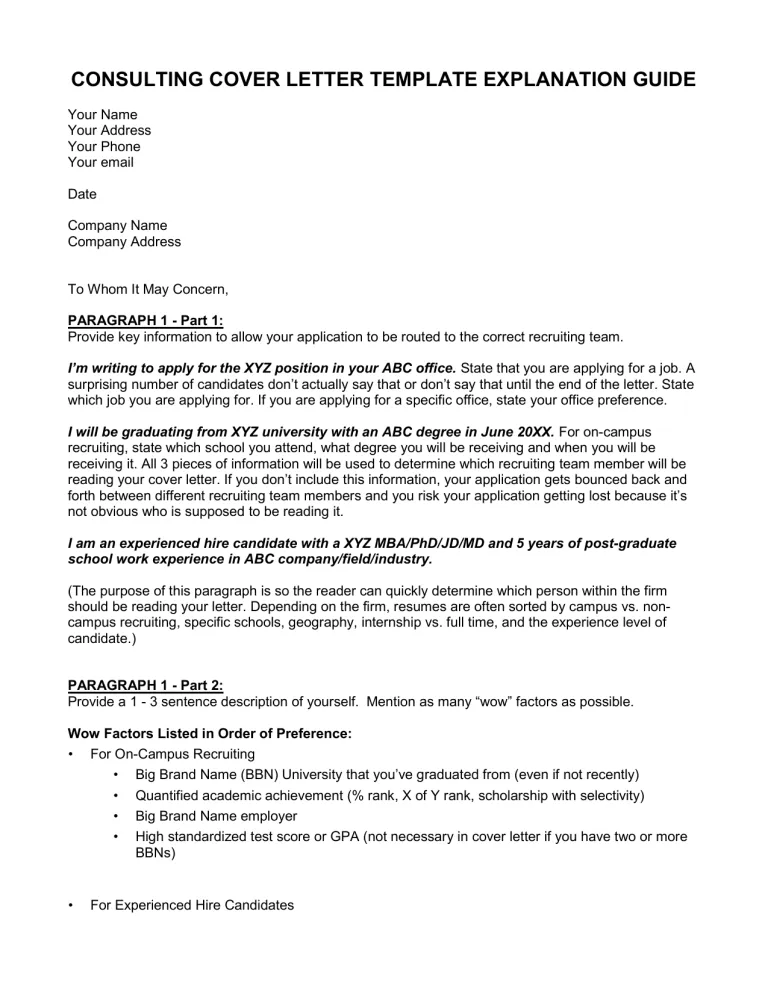Why List Previous Employers in Your Cover Letter?
A cover letter is your first introduction to a potential employer, and it’s your chance to make a strong impression. Listing your previous employers is a crucial part of crafting an effective cover letter. This practice serves multiple purposes, all geared towards showcasing your suitability for the job. By including your employment history, you provide concrete evidence of your professional experience. It allows you to connect your skills and accomplishments to the requirements of the target role. Moreover, it provides context for your resume, offering a narrative that highlights career progression and relevant expertise. Excluding this information can leave gaps in your application, making it harder for recruiters to evaluate your potential. A well-structured cover letter with your previous employers is a key step in successfully navigating the job application process and securing an interview.
Highlighting Relevant Experience
When including previous employers in your cover letter, it’s not just about listing company names. The key lies in highlighting relevant experience. Start by carefully reviewing the job description to identify the key skills and qualifications the employer is seeking. Then, for each previous employer you list, focus on the experiences and accomplishments that directly align with those requirements. This is an opportunity to demonstrate how your past roles have equipped you with the skills needed for the target position. Don’t just mention your job titles; instead, provide concise details about your responsibilities and the results you achieved. Use this space to draw clear parallels between your previous roles and the requirements of the job you’re applying for. This targeted approach will make your cover letter more impactful and increase your chances of being selected for an interview. Remember, the goal is to show, not just tell, how your past experiences make you the perfect candidate.
Tailoring Your Cover Letter to the Job

One of the most important aspects of a successful cover letter is its ability to be tailored to the specific job you are applying for. This means that when you list your previous employers, you should customize your descriptions for each application. Don’t use a generic cover letter for all jobs. Instead, take the time to research each company and understand the role’s specific requirements. Then, carefully select which experiences from your previous employers are most relevant to the target position. Prioritize those experiences in your cover letter and emphasize the skills and accomplishments that align with the job description. If you’ve held similar roles at different companies, consider which employer’s experience is most pertinent to the specific job. This personalized approach demonstrates your genuine interest in the position and your ability to adapt your skills to different environments. Tailoring your cover letter is an investment that pays off in the long run, as it significantly increases your chances of capturing the employer’s attention and securing an interview.
Selecting the Right Employers
Deciding which previous employers to include in your cover letter is an important step in presenting yourself in the best possible light. While it’s tempting to list every job you’ve ever had, the focus should always be on relevance. Prioritize the employers and roles that are most directly related to the job you’re applying for. These are the positions that will showcase your relevant experience and skills. If you have a long work history, it’s acceptable to omit less relevant jobs to keep your cover letter concise and focused. Consider the types of experiences the employer is looking for and choose the employers that will best illustrate your ability to meet those needs. Also, think about the impression each employer will make. Highlighting well-known or respected companies can add credibility to your application. Remember, quality is more important than quantity. By carefully selecting your previous employers, you can create a cover letter that highlights your strengths and increases your chances of getting noticed.
Formatting Your Employment History
The way you format your employment history in a cover letter can significantly impact its readability and effectiveness. Start by organizing your information clearly and logically. Most people use a reverse chronological order, listing your most recent employer first. This approach allows the employer to quickly see your most recent experiences. For each employer, include the company name, your job title, and the dates of employment. Keep this information concise but accurate. Use bullet points or short paragraphs to describe your key responsibilities and achievements. This format makes it easier for the reader to scan and quickly grasp your experience. Consistency is key. Use the same formatting style throughout your employment history. Proofread your cover letter carefully to ensure that the formatting is consistent and free of errors. A well-formatted employment history is easy to read and shows that you pay attention to detail, which is crucial in any professional setting.
Providing Concise Descriptions

When describing your responsibilities and accomplishments from previous employers, aim for conciseness. Use clear, straightforward language to convey your points efficiently. Recruiters and hiring managers often have limited time, so it’s essential to get your message across quickly. Avoid lengthy, wordy descriptions. Instead, focus on the most important details. Use bullet points to highlight key responsibilities or achievements. This format makes it easier for the reader to scan the information and quickly grasp the value you brought to each role. Keep each bullet point or paragraph brief, ideally no more than two or three sentences. Quantify your achievements whenever possible, using numbers to demonstrate the impact of your work. For example, instead of saying you ‘managed social media,’ you could say ‘increased social media engagement by 30%.’ Concise descriptions show that you can communicate effectively and that you value the reader’s time. These elements will help make your cover letter compelling.
Emphasizing Accomplishments
While listing your previous employers is essential, it’s equally important to emphasize your accomplishments within those roles. Instead of simply describing your responsibilities, use the cover letter as an opportunity to showcase your achievements. Think about the times you went above and beyond, exceeded expectations, or delivered exceptional results. These are the achievements that demonstrate your value to a potential employer. Whenever possible, quantify your accomplishments with numbers. For example, instead of saying you ‘improved customer satisfaction,’ you could say ‘increased customer satisfaction by 15%.’ Use action verbs to describe your accomplishments. Words like ‘managed,’ ’led,’ ‘achieved,’ and ‘implemented’ can make your descriptions more impactful. Focus on the outcomes of your work. What did you achieve? How did your actions contribute to the success of your previous employers? Highlighting your accomplishments is a key way to differentiate yourself from other candidates and make a strong impression on the hiring manager. This also helps to make your cover letter stand out.
Quantifying Your Achievements
Quantifying your achievements is a highly effective strategy for making your cover letter more compelling and demonstrating the tangible impact of your work. Numbers provide concrete evidence of your accomplishments and show potential employers the value you can bring to their organization. Instead of using vague statements, use specific metrics to illustrate your successes. For example, instead of saying you ‘increased sales,’ say you ‘increased sales by 20% in one year.’ Use percentages, dollar amounts, or any other relevant data to quantify your achievements. For instance, highlight the number of projects you managed, the amount of money you saved, or the number of customers you served. Providing these details allows the hiring manager to clearly see your contributions and understand the value you provided in your previous roles. This approach sets you apart from other candidates and creates a more persuasive case for your abilities. Remember to always back up your claims with verifiable data or results.
Using Action Verbs

The language you use in your cover letter can significantly influence its impact. One of the most effective ways to enhance your descriptions of previous employers is to use strong action verbs. Action verbs bring your accomplishments to life and make your cover letter more dynamic and engaging. Start each bullet point or paragraph with a compelling action verb. Examples include ‘managed,’ ’led,’ ‘created,’ ‘developed,’ ‘implemented,’ ‘achieved,’ ‘increased,’ ‘reduced,’ ‘improved,’ ‘streamlined,’ and ‘collaborated.’ These verbs convey a sense of purpose and initiative. When you use action verbs, you are not only describing what you did, but you are also demonstrating your skills and abilities. It shows that you are a proactive individual who takes initiative and gets things done. Review your cover letter carefully and replace any passive or weak language with strong action verbs. This will help you present yourself in a more positive and professional light, making your cover letter more persuasive.
Proofreading Your Cover Letter
Before submitting your cover letter, proofreading is critical. Errors in grammar, spelling, or punctuation can undermine your credibility and make a negative impression on potential employers. Carefully review your cover letter to ensure that it is free of any mistakes. Pay close attention to the names of previous employers, your job titles, and the dates of employment. Verify that all the information is accurate. Use a spell checker and a grammar checker to catch any errors you may have missed. However, don’t rely solely on these tools. Proofreading also involves reading your cover letter carefully to assess its flow and clarity. Ask a friend, family member, or career counselor to read your cover letter and provide feedback. A fresh pair of eyes can often spot errors you might have missed. Proofreading demonstrates your attention to detail and commitment to professionalism, which are essential qualities for any job.
